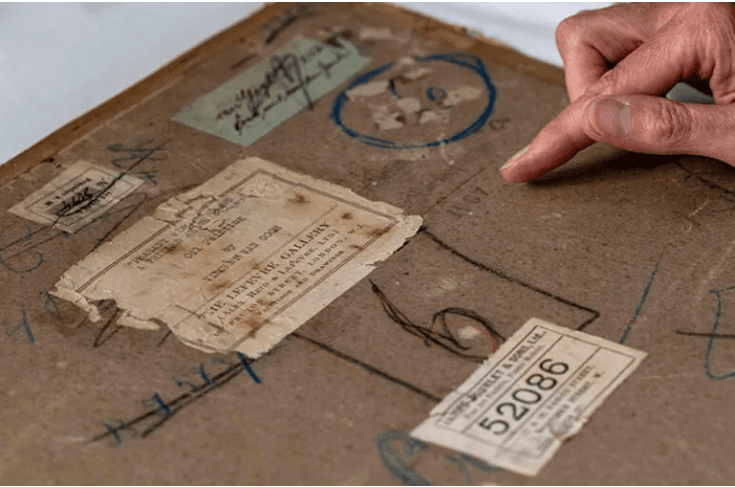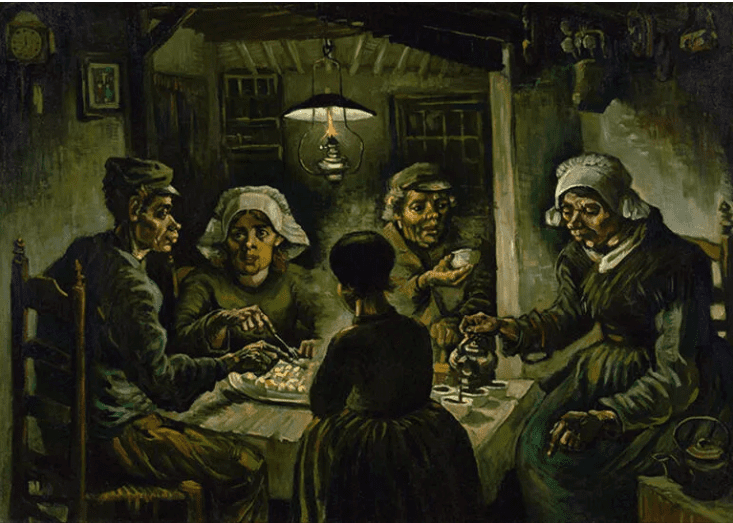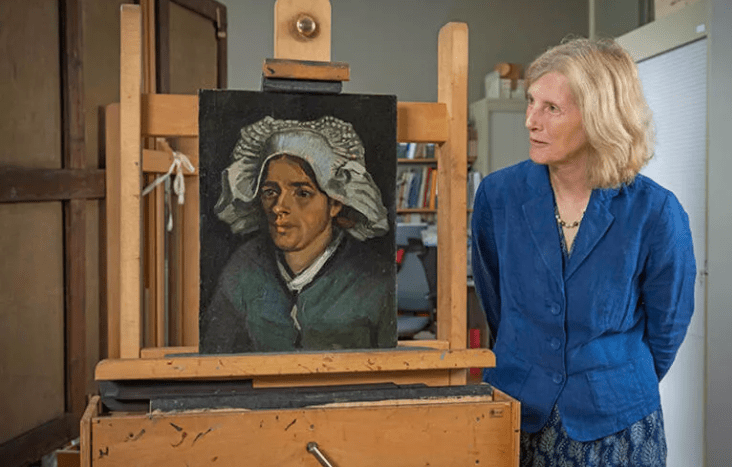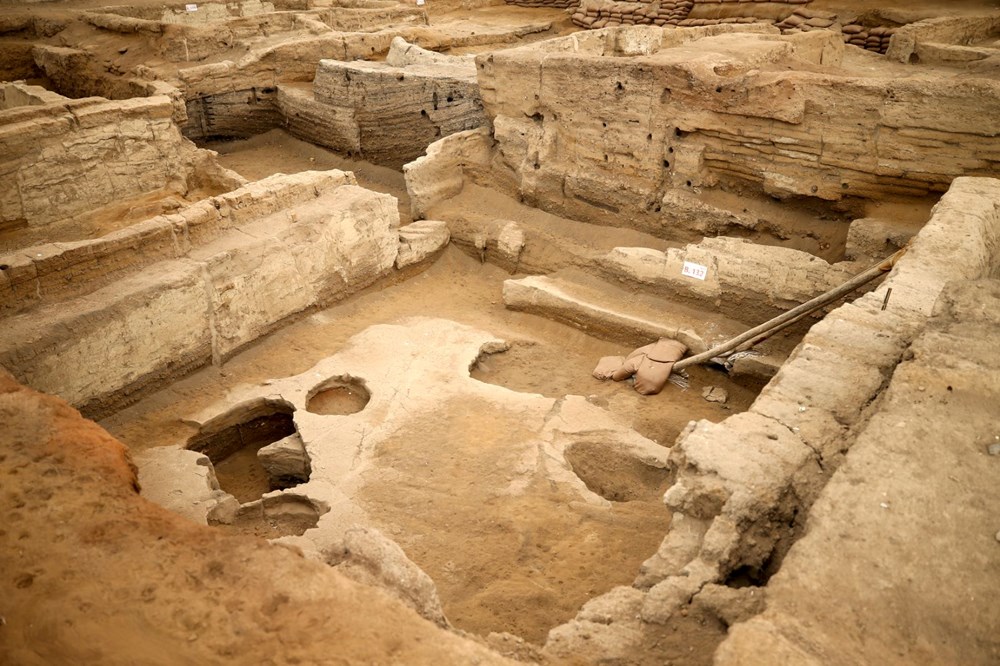The discovery 135 years later of a never-before-seen self-portrait of Vincent van Gogh hidden behind another of his paintings has led to a new scrutiny of the artist’s 37-year life full of question marks. Moreover, new questions have been raised. Here is the van Gogh enigma and the endless debates that have occupied art historians for more than a century…
The world-famous Dutch painter Vincent Van Gogh painted 36 self-portraits in 10 years. When we consider that this is roughly the total number of works by another Dutch painter, Johannes Vermeer, the number of van Gogh’s self-portraits can be better understood.
Moreover, a new one has been added to these self-portraits. Or rather, it seems to be added…
- The latest rumors include: Britney Spears unexpectedly gushing over Michelle Pfeiffer in Batman Returns, H.E.R. becoming a Disney princess, and more
- New trailer for House of the Dragon!
Last week, conservators from the National Galleries of Scotland announced that they had found a self-portrait underneath another of van Gogh’s paintings. But for now, this self-portrait is hidden behind a layer of cardboard and glue.
This important discovery was announced by the Edinburgh Museum. When the museum’s conservators examined van Gogh’s 1885 painting “Head of a Peasant Woman” under X-ray, they came across a surprising image. On the other side of the painting was the cardboard-covered face of a person who looked very much like van Gogh.
It was probably Johanna van Gogh-Bonger, the wife of van Gogh’s brother Theo. It was van Gogh-Bonger who sent the painting to an important exhibition in Amsterdam in 1905.
Evelyn Fleming later bought the painting. Acting on the advice of her Welsh painter lover Augustus John, Fleming was of course unaware that she had bought two van Gogh works for the price of one. (It is also interesting to note that Evelyn Fleming’s son Ian Fleming is the creator of the James Bond character).

A LIFE FULL OF QUESTION MARKS
Van Gogh died when he was only 37 years old, and his life is full of fascinating details. Moreover, despite the thousands of scientific and archival studies that have been conducted on him for over 100 years, many issues remain mysterious.
For example, while his death was once considered a suicide, recent biographies suggest that he was murdered. He is said to have suffered from a mental illness, but it is not clear what this illness was. It is not known what medications he was taking to treat his illness and how these medications affected his health and art. It is also unclear what motivated him to cut off part of his ear and give it to a prostitute from Arles.
The discovery of Van Gogh’s self-portrait in the painting “Peasant Woman’s Head” raised these questions and many more.
For example, why was van Gogh’s self-portrait covered with cardboard? Did van Gogh-Bonger believe that there was something in that painting that we were not supposed to see? Or could he have known that van Gogh considered his work unfinished and not worthy of being exhibited (after all, throughout his career the whole world had been telling van Gogh that nothing that came from his brush was worthy of being exhibited)?
HUNDREDS OF PAINTINGS LEFT IN THEIR HANDS
Van Gogh-Bonger’s wife, Theo, was an art dealer and the main pillar that kept her brother from collapsing financially and psychologically. Theo died six months after Vincent.
After Theo’s death, van Gogh-Bonger, who had only recently met both his wife and her brother, was left with a tiny baby in her arms and hundreds of unsold van Gogh paintings. (Theo and Johanna had named the baby Vincent, born six months before van Gogh’s death.)
According to Martin Bailey, a van Gogh expert and writer for The Art Newspaper, van Gogh-Bonger covered the back of “Peasant Woman’s Head” (and thus the self-portrait) to stabilize it before framing it and sending it to Amsterdam.

AN IMPORTANT WORK FOR VAN GOGH BECAUSE…
In the early 1900s, Gordina De Groot’s “Head of a Peasant Woman” was considered a more valuable work than van Gogh’s self-portrait. This painting was an extension of van Gogh’s “The Potato Eaters”, which was considered to be his most important achievement to date.
Van Gogh completed “Peasant Woman’s Head” in 1885 in the town of Neunen, where his parents had recently settled.
In fact, when van Gogh arrived in Nuenen in late 1883, relations with his family were very troubled. But van Gogh fell in love with the town’s landscapes, the local people and their hardscrabble lives, and decided to stay.
At the time, van Gogh was reading Emile Zola’s famous novel Germinal, about the rural underclass, and was haunted by his protagonist Jean-François Millet’s paintings of workers in the fields.
In March 1885, his father died of a sudden heart attack. Even after this death, van Gogh continued to live in Nuenen. He was on very good terms with one family in particular, the de Groots.
In a letter to his brother Theo in early May, he wrote: “When I went to their house this evening, I found the family dining in the light of a small window instead of a lamp. Ah, it was so beautiful as to be enchanting.”
Describing the two women at the table as “almost the color of dark green soap,” van Gogh wanted to paint them. One of those women was the young Gordina de Groot. Gordina modeled for several of van Gogh’s paintings, and when she later became pregnant, the town’s clergyman accused van Gogh of being the father of the baby.
HE RAN OUT OF PEACE IN NUENEN AND MOVED TO ANTWERP
Van Gogh denied this accusation and said that Gordina had shared with him the identity of the baby’s father. He said that this person was a member of the clergyman’s congregation. On the one hand, the clergyman urged local people not to model for van Gogh, and on the other, he warned the painter not to “get too intimate with people below his level.”
Since van Gogh’s studio and the clergyman’s house were very close to each other, the tension was unbearable. The situation finally culminated in van Gogh leaving Nuenen in November 1885 and moving first to Antwerp and then to Paris in early 1886.
He evidently took the portrait of Gordina de Groot with him when he left Nuenen. According to experts, van Gogh used the back of the canvas to paint a self-portrait two years later when he was living in Paris, and this work was discovered roughly 135 years later thanks to X-ray technology.

MATURED WITH SELF-PORTRAITS
In fact, van Gogh painted about 20 self-portraits during the years he lived in Paris and later in Arles in the south of France. Because hiring a model was expensive; he could paint his own face without spending a dime. Moreover, he had the chance to make experiments that he could not do using other models.
However, van Gogh’s admiration for his developing identity as a painter was obvious. Some sources suggest that these self-portraits served to boost van Gogh’s confidence. Even if not, they clearly expressed his curiosity about the strange (and up to that point unsuccessful) way of life he had chosen. Some of his experiments went well, but others were clear failures.
Van Gogh’s various self-portraits, some of which are in the Van Gogh Museum in Amsterdam, were also X-rayed to reveal other paintings. In one of them the painter was half-naked, in another he was naked and standing.

“GORDINA MARRIED?”
When all these works are considered together, it can be concluded that van Gogh had difficulty in finding a canvas and perhaps he did not care much about preserving his previous paintings. In the painting “Peasant Woman’s Head”, it is interesting that Gordina painted herself on the back of the painting instead of painting over it. This raises the question, “Was there something more to their relationship that we don’t know?”
In October 1887, shortly after he painted his newly discovered self-portrait (if the date on the painting is correct), van Gogh wrote to his sister Willemien asking about the de Groot family.
Referring to Gordina’s pregnancy, he said, “What happened to that business?” and added: “Did Sien [Gordina] marry her cousin? Is her child alive?”
The answer to this question was ‘yes’. The baby, a boy, was born on October 20, 1885. Gordina was still unmarried at the time. (The reason Van Gogh asked about Gordina’s cousin in his letter was that he was probably the most likely person to give the baby his last name.)
THERE ARE OTHER PAINTINGS MADE IN THIS WAY
On the other hand, it seems that using the backs of canvases was not so unusual for van Gogh. According to Bailey, the same was true of the three paintings he completed in Nuenen. These were discovered in 1929 after the Dutch conservator Jan Cornelius Traas removed the cardboard from the backs of the paintings.
Bailey also emphasized that this latest discovery may not be such a big surprise, as “it has long been suspected that there may be something hidden behind the ‘Peasant Woman’s Head'”.
Of course, this could also be speculation. But surprise or no surprise, it’s still exciting to come across a new van Gogh self-portrait after all this time.





